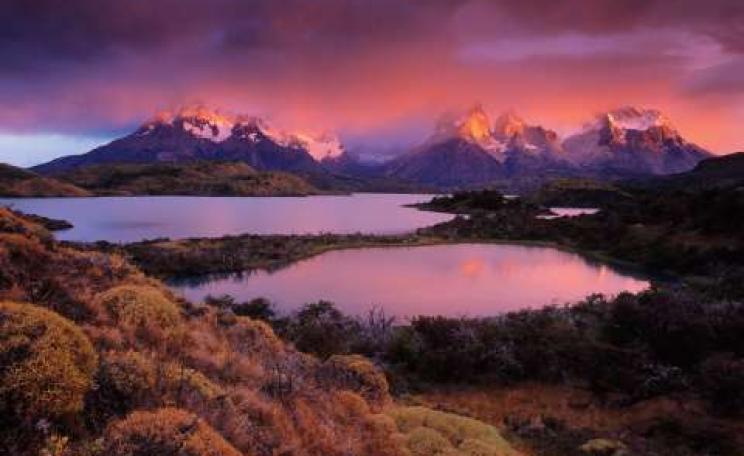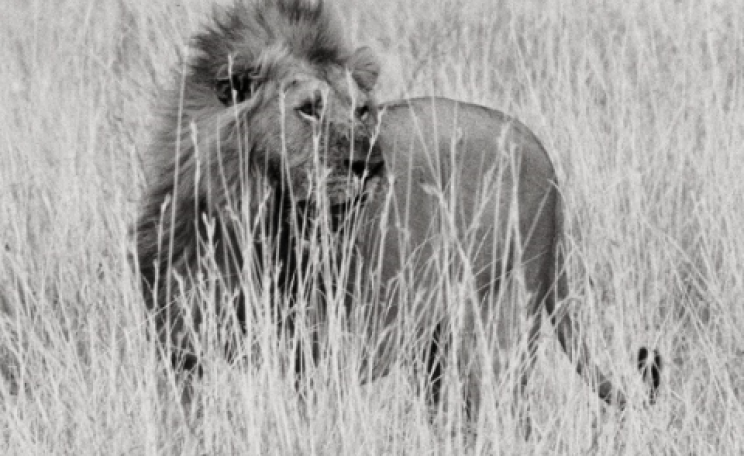If it succeeds in engaging children and young people in climate change, and teaches them the underlying scientific principles, even the most painful jokes are surely a price worth paying.
If you casually drop into a conversation the phrase "book of cartoons", those of a certain generation or background are liable to visualise a humorous compilation by Giles.
However, as its title suggests, this publication is something quite new, and definitely different, for it employs the medium of visual humour to put across a serious subject - the origins and adverse effects of anthropogenic global warming on humankind and our planet's natural environments.
Its approach should already be familiar to aficionados of the hugely successful Horrible Histories and Horrible Science series - whose educational value lies in turning learning into entertainment.
With its 'The Cartoon Introduction to Climate Change', Island Press has surely filled a niche in the publishing market. But should we welcome it arrival? With few caveats the answer to this must be yes.
Why? Well, if for no other reason than the book's appeal to the widest possible age group. Indeed, the concept could prove of educational value to children from age five upwards and, judiciously employed and adapted, might even find a valuable role in a formal educational setting.
Additionally, with its emphasis on images rather than text, one may imagine the format being easily (and perhaps quite economically) translated into any number of languages. In which case the opportunity could be taken to tone down the rather obvious American genesis of the project
The aim might be achieved, for example, by substituting Sir Richard Doll for the US Surgeon General, and avoiding the inadvertent impression that President Reagan was somehow the hero of the 1987 Montreal Protocol.
Arch villains exposed with visual gags
Much of the impact is achieved by endowing normally inanimate substances with personalities. Thus our arch-villain carbon dioxide is presented in the form of a malevolent floating sprite, as are its greenhouse gas ally methane.
Even more sinister is sulphur hexafluoride, this latter 'character' at one point boasting how much more powerful a greenhouse gas it is than our more common and humble CO2 - and since you're wondering, it's about 24,000 times.
This clever reliance on visual metaphors and simple 'sight gags' permeate each page. Thus two cakes are brought to a table at which sit five 'guests', representing China, India, the rest of Asia, the rich world, and everyone else.
The fact that one cake is given to the rich world and the second cake to the remaining four guests to share, is a graphic reminder of how the rich world economies are responsible for half the World's fossil fuel consumption.
Or, to emphasise the malign effects on the animal kingdom of melting Arctic ice, we have a rather lugubrious polar bear confined to a berg the size of a large ice-cube, and gesturing accusingly towards its human nemesis nearby.
A plethora of gags
If it succeeds in engaging children and young people in climate change, and teaches them the underlying scientific principles, even the most painful jokes are surely a price worth paying.
This theme is complemented by an imaginary future travel agent's poster depicting a holiday cruise ship at an ice-free Arctic Circle with the strap-line "well there used to be ice-bergs here". The ship's ironic name? - Titanic II.
In this context, there's an answer to a significant question we might not even have thought to ask - why are the melting ice caps of Greenland and Antarctica a greater threat to human-kind than the melting of the Arctic ice cap? Answer - because the Arctic ice is floating and so doesn't raise sea levels.
And where low-lying agricultural regions of our planet are affected the point is made by a farmer, knee-deep in sea-water, complaining that instead of his traditional concern about weeds, he is now confronted by sea-weeds.
And to show how rising sea levels impact differently on rich and poor, a wealthy westerner sits comfortably in his over-sized SUV, becoming bothered when its tyres get wet, whilst a symbolic Bangladeshi peasant simply drowns - a suitably exaggerated contrast between a threat to the triviality in someone's 'quality of life' and an actual loss of life.
One poor character in a primitive shelter reminds a visiting scientist that such outcomes are doubly unfair, as his "carbon foot-print is more like a toe-print".
Of course the quality of human life is also degraded by the loss to future generations of cherished animal species. This malign side-effect of global warming is here poignantly conveyed by an imaginary picture gallery of creatures with big black crosses through those which have become extinct, complete with their mock-scientific appellations.
So amongst others, it's bye-bye to Albino nonvegeteriania (polar bear) and Gigantica pickyeater (humpback whale), but very much still with us will be the Amazing nevergoextinctus (mosquito).
Some real science in here too
Such points are well made - and expected. But we also find the unexpected. Who could anticipate, for example, that within an explanation of atmospheric water vapour acting as another greenhouse gas, a cartoon book would mention the Clausius-Clapeyron relationship (ie that for every average global increase of 1oC, there will be a 7% increase in water vapour) - and even include images of those redoubtable Victorian physicists.
It's commendable that reference is made to the key discoveries of individual scientists (eg Malankovitch, Keeling, Arrhenius) who, whilst not being household names, are key historical figures in the sphere of planetary climate change.
However, should it be taken for granted that everyone will recognise the be-wigged and frock-coated gent with an apple falling on his head is Isaac Newton? Or will every reader appreciate that the quote about tradesmen's motivations emanating from their self-interest rather than their benevolence, is from Adam Smith?
Although these are minor grumbles, it's only fair to admit that a few imbibers of this work may initially feel the cartoons' relatively fussy style inadvertently compromises the explanations in some places.
Or, in other words - and I beg your pardon for mangling Marshall McLuhan's epigramatic dictum - 'the medium blurs the message'. That's not something you would expect with, for example, Gary Larson.
Ultimately though, the almost aggressive jokiness is subsumed by this publication's obvious educational credentials, manifested in its diligent thoroughness (200 pages) and excellent glossary of terms.
And if it succeeds in engaging children and young people in climate change, and teaches them the underlying scientific principles, even the most painful jokes are surely a price worth paying.
The book: 'The Cartoon Introduction to Climate Change' is written by Yoram Bauman with artwork by Grady Klein. It is published by Island Press, 2014. Paperback, 200 pages, ISBN: 978-1-61091-438-3.
Edgar Vaid is a freelance book and film reviewer. For more than 30 years he worked for Natural England, becoming involved in policies including traditional field boundaries, organic farming, and public rights of way. However, he became witness to a series of increasingly over-sophisticated corporate programmes, and endured some mind-numbing team meetings. As a more productive and satisfying diversion, he took to writing reviews Edgar lives in the Forest of Dean, and may be contacted at orizabalodge@yahoo.co.uk.







